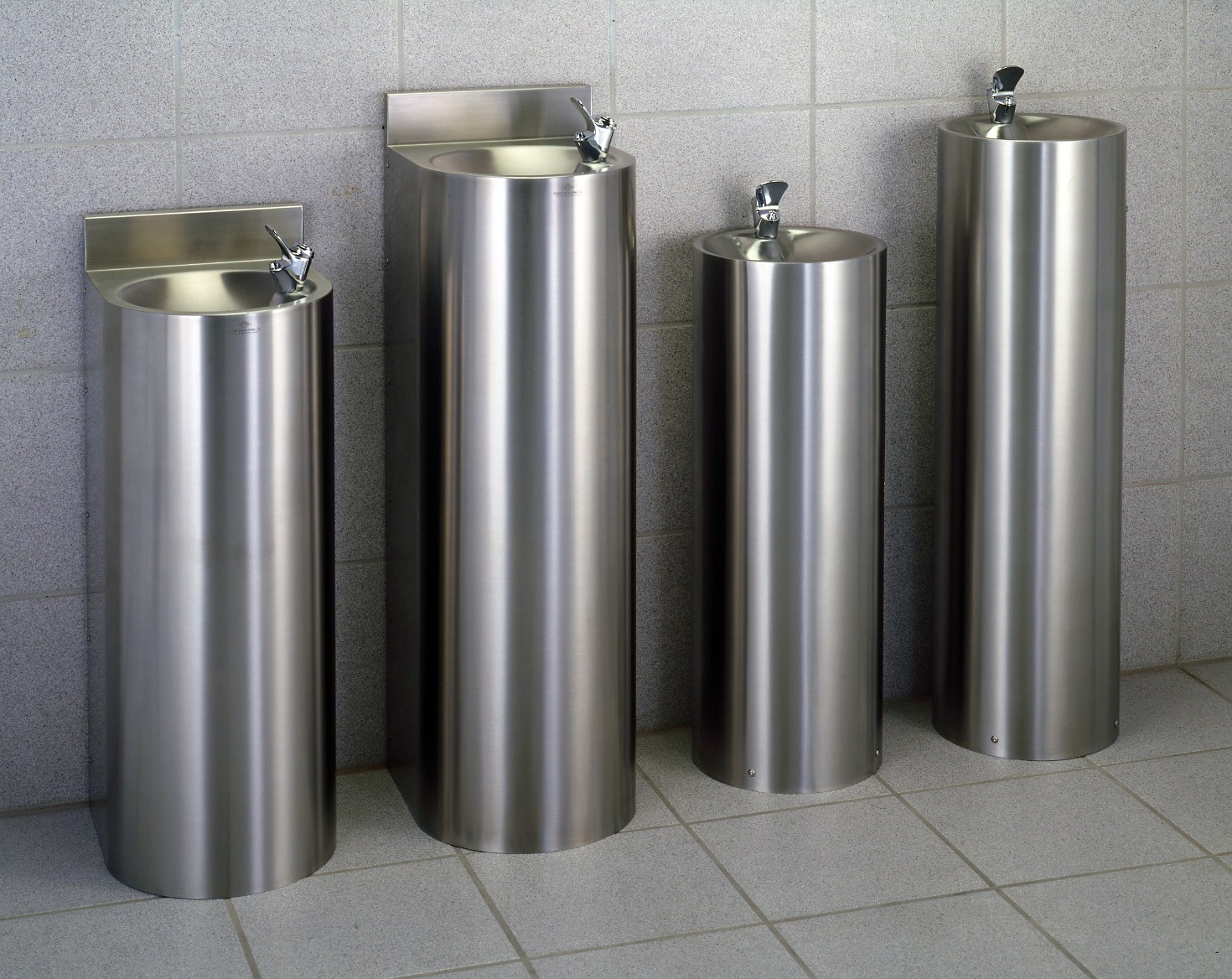School Toilets: Planning A* facilities for your building.
Planning a School Washroom
There are multiple factors to consider when designing washroom facilities for schools, as the overall layout of amenities can have a huge impact upon the health and wellbeing of pupils.
Whether you’re looking to install school wash troughs to encourage handwashing or require expert advice on hydration and the provision of school drinking fountains, the below information details everything you need to know when planning school toilet blocks that are guaranteed to pass the test.
![wash fountain in school toilet]()
Toilets in Schools: Your Complete Guide
The official Advice on Standards for School Premises report, published by the Department for Education, offers a blueprint of best practice recommendations for a wide range of school facilities, including toilets and washrooms.
Rules are not as restrictive as they once were, now preferring to use the word “suitable” rather than outlining specific requirements for individual fittings. For example, ISS Regulation 23A states:
- Suitable toilet and washing facilities must be available for the sole use of pupils, with staff and visitor amenities provided separately.
- However, shared access is permissible for disabled facilities, with sub-paragraph (1) (a) stating that such facilities can be used by all pupils, staff, supply staff, volunteers and visitors, regardless of whether or not they are disabled.
- Where children aged 11 and over participate in Physical Education, suitable changing rooms with showers must be provided.
- Separate toilet facilities must be provided for girls and boys aged eight years and over, except in the case of individual cubicles which can be locked from the inside and are only intended for the use of one person at a time.
Unisex toilet areas have become increasingly popular, with full length doors and divider panels ensuring full privacy, and communal handwashing areas used to maximise space. Sanitary products and disposal units must be provided in all toilets for girls over the age of eight.
While there is some debate over how appropriate unisex toilets are in schools which we will stay out of, they are here to stay, in our experience the better designs offer two banks of separated toilet cubicles (for male and female) and a central dividing wash trough. This allows segregation and privacy whilst giving the open communal space to discourage bullying and anti-social behaviour traditionally associated with enclosed toilet spaces.
For further insight, please read our guide to successfully planning a unisex bathroom.
There are no regulations on the precise number of toilets that should be provided, allowing local authorities some freedom to decide how best to use space, but, as a general rule, these are the guidelines to follow:
Age No. of Toilets No. of Washbasins under 5 1 for every 10 pupils 1 per toilet 5-11 1 for every 20 pupils 1 per toilet 11+ 1 for every 20 pupils 1 per toilet, although there is scope to reduce the amount of individual basins if washing facilities are shared While washbasins are stipulated in the above table, troughs have the advantage of being easier to clean than individual basins, while there is also a reduced risk of flooding.
Furthermore, facilities that are designed and fitted to a high standard will encourage regular handwashing, which has obvious health benefits, and it has also been suggested that high-quality fittings dramatically reduce the risk of vandalism, as pupils will have a greater respect for their amenities.
To avoid dirt and grime building up, it is generally advised that school toilets should be wall-hung, enabling easier cleaning. Pipework and fixing frames should be concealed to avoid interference
Design considerations for disabled toilets
School washrooms are subject to Part M of standard Building Regulations, stating that every same-sex toilet block must have at least one WC that is suitable for the ambulant disabled, with at least 800mm between surfaces and sufficient grab rails.
Wheelchair-accessible toilets should also be available throughout the school, allowing easy access for staff and visitors, as well as pupils, without needing to travel large distances or having to change floors. Additionally, accessible toilets should be of the same aesthetic finish and design quality as other amenities, while doors must open outwards and onto a circulation space of at least 750mm, away from staircases.
At least one cubicle must be enlarged where there are four or more cubicles to a washroom, with a width of 1,200mm, with both vertical and horizontal grab rails. Standard cubicles, by comparison, must have a minimum diameter of 450mm maneuvering space clear of the door.
Limiting anti-social behaviour
School toilet blocks must be designed so that:
- Hand-washing amenities are provided within the immediate vicinity of every toilet, with temperature-limiting devices fitted to prevent the risk of scalding. Tamper-proof mixer taps that automatically turn off after one litre of usage should be fitted. Infrared taps have many benefits, and are becoming more popular in schools.
- Rooms are sufficiently ventilated and adequately lit.
- Locks can be easily operated in a single action, while doors must allow for emergency access in the event of somebody becoming trapped.
- They are easily accessible and allow for passive staff supervision, without compromising pupil privacy.
In an effort to combat anti-social behaviour, toilets should be spread out over multiple, smaller blocks rather than one centralised block. Anti-social behaviour and bullying is more prevalent when large groups of children congregate unsupervised, so it’s advisable to have staff rooms and offices located close to facilities, allowing for informal supervision.
Additionally, it has become increasingly common for wash troughs to be incorporated into open-plan designs adjacent to corridors, reinforcing good behaviour and potentially allowing boys and girls to share the handwashing zone, making the maximum use of space with minimal plumbing required.
Drinking water provision in schools
ISS Regulation 23F states that suitable drinking water facilities must be provided and clearly marked as ‘drinking water’, with regular maintenance to ensure good working order. It is also recommended that drinking water supplies are directly connected to the cold water main, as separate tanks can be difficult to preserve.
Many studies have shown that children must drink proportionately more water than adults, as their body masses contain approximately 15-25% more water. As such, health organisations have published guidelines suggesting:
-
Boys and girls aged 4-8 years need 1.1 to 1.3 litres per day.
-
Girls aged 9-13 years need 1.3 to 1.5 litres per day.
-
Boys aged 9-13 years need 1.5 to 1.7 litres per day.
Ensuring that pupils have easy access to drinking fountains and bottle-filling stations is crucial for education, as research into the water consumption of schoolchildren has indicated that dehydration results reduced cognitive abilities, causing shorter attention spans and severely impairing the whole learning experience.
Therefore, teachers are now being encouraged to allow water bottles in class and promote the benefits of regular hydration throughout the day.
![stainless steel floor standing drinking fountains]()
We recently supplied stainless steel drinking fountains to the prestigious Rugby School. For further insight on this particular project, please read our case study on school water fountains.
Supplying sanitary ware to your school
The Washware Essentials team is highly experienced in supplying nursery, primary and secondary schools of all sizes with everything that modern washroom facilities require. Whether you’re looking for high-quality solid surface wash troughs or WC pans, child-friendly taps or sanitary ware accessories, we’re always happy to help.
Please call 01275 400456 today, or email sales@washwareessentials.co.uk for our expert advice on getting your school toilets up to scratch.
-
Posted by Paul Thorn
13th May 2018

 UK's Largest Stockholding
UK's Largest Stockholding Next Day Delivery Available
Next Day Delivery Available UK Mainland Delivery from £15
UK Mainland Delivery from £15 Minimum 1 Year Guarantee
Minimum 1 Year Guarantee
